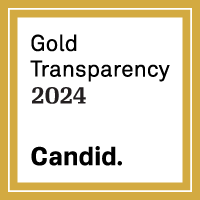INDYWIDUALNA OSOBA Z LGMD: Natasha

LGMD "WYWIAD W ŚWIETLE REFLEKTORÓW"
Nazwa: Natasza Wiek: 25 lat
Kraj: Stany Zjednoczone
Podtyp LGMD: LGMD D1 związany z DNAJB6 (dawniej LGMD typ 1D)
W jakim wieku zostałeś zdiagnozowany?:
Zdiagnozowano mnie w wieku 23 lat.
Jakie były pierwsze objawy?:
Nasz podtyp ma późny początek, więc obecnie nie mam żadnych objawów, chociaż w okresie dorastania były małe rzeczy, które mają większy sens teraz, gdy wiem o mojej diagnozie. Dorastając, nie mogłam biegać tak szybko, jak moi rówieśnicy i miałam problemy z podnoszeniem się z ziemi bez użycia rąk, na przykład w tańcu.
Czy masz innych członków rodziny cierpiących na LGMD?
Tak, mój tata, wujek (ze strony ojca) i dziadek ze strony ojca mają tę samą diagnozę. dziadek mają tę samą diagnozę.
Co uważasz za największe wyzwanie w życiu z LGMD:
Największym wyzwaniem była dla mnie świadomość, że pewnego dnia moja mobilność będzie mniejsza niż teraz i że mogę nie być w stanie kontynuować prowadzić aktywnego trybu życia, który obecnie lubię.
Jakie jest twoje największe osiągnięcie?:
Nie jestem pewien, co jest moim największym osiągnięciem... Musiałbym powiedzieć, że więzi rodzinne i przyjacielskie, które utrzymałem. Plus społeczność, którą mamy i budujemy dla dominujących form LGMD poprzez Fundację LGMD-1D DNAJB6, która jest publiczną fundacją non-profit, której misją jest utrzymanie centralnej lokalizacji dla osób, u których zdiagnozowano dystrofię mięśniową obręczy kończyny typu 1D (LGMD1D), aby spotykać się, konsolidować istotne wiadomości i rozpoczynać zbiórki pieniędzy w celu przyspieszenia badań. https://lgmd1d.org Utworzyliśmy również Rejestr Pacjentów dla wszystkich pacjentów, u których zdiagnozowano autosomalną dominującą postać LGMD.
W jaki sposób LGMD wpłynęło na to, że stałeś się osobą, którą jesteś dzisiaj:
Zawsze myślę o przyszłości, o tym, jak moje działania teraz teraz wpłyną na moje ciało, ludzi, których kocham i rodzinę, którą mam nadzieję wychować. To sprawiło, że obudziłem w sobie cierpliwość i spróbowałem prowadzić mniej intensywny fizycznie styl życia.
Co chciałbyś, aby świat dowiedział się o LGMD?:
Musimy kontynuować rozpowszechniać informacje i łączyć się w sposób, który pomoże w wyleczeniu. Na przykład, autosomalny dominujący rejestr pacjentów z LGMD (LGMD typu 1) będzie miał kluczowe znaczenie dla badań i znalezienia lekarstwa.
Gdyby jutro można było "wyleczyć" chorobę LGMD, co byłoby pierwszą rzeczą, którą chciałbyś zrobić:
Gdybym jutro został wyleczony, poszedłbym tańczyć, żeby to uczcić!!!
Aby przeczytać więcej wywiadów "LGMD Spotlight Interviews" lub zgłosić się do udziału w nadchodzącym wywiadzie, odwiedź naszą stronę internetową: https://www.lgmd-info.org/spotlight-interviews







